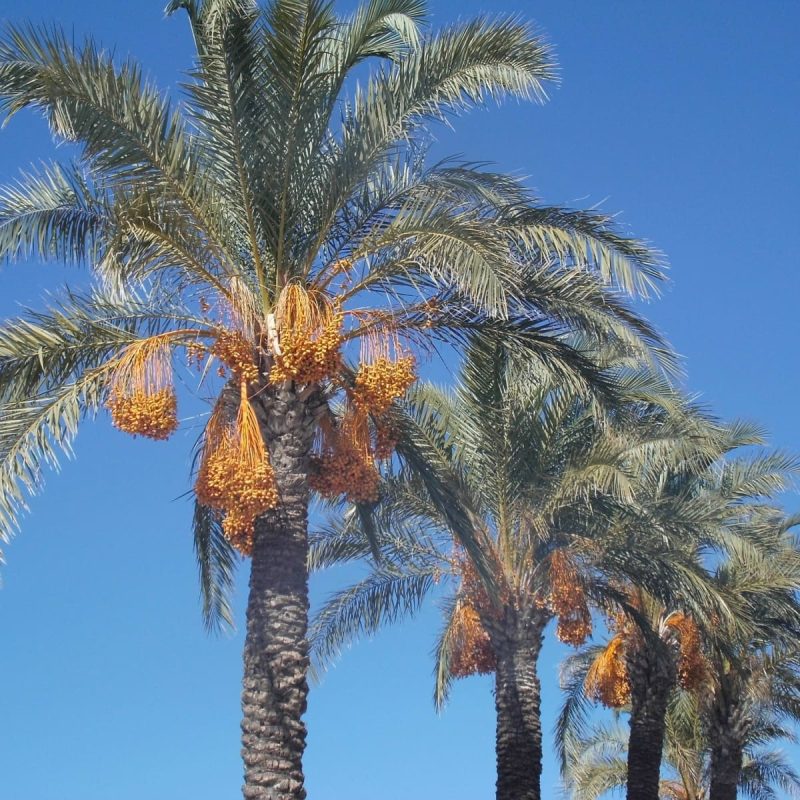Blog
How to differentiate a Date palm tree from other palm trees
Palm trees are a common sight in many parts of the world, but not all of them are the same. One particular type of the large family of palms is the date palm, known for producing delicious and nutritious fruits that have been cultivated for thousands of years. If you’re curious about differentiating a date palm tree from other palm trees, read on to discover all the ways you can notice the difference!
Physical characteristics of date palm trees
The first step in differentiating a date palm tree from other palm trees is to look at its physical characteristics. Date palms have a distinctive shape, with a tall trunk and a crown of leaves that can grow up to 100 feet tall. The leaves are long and slender, with sharp, pointed tips, and they can range in color from blue-green to gray-green.
Another characteristic of date palm trees is the presence of spines on the trunk and leaves. The spines on the trunk are usually clustered together in groups, while the spines on the leaves are more spread out. This is an important distinction, as many other palm tree types do not have spines.
Fruit production of date palm trees
Another way to differentiate a date palm from other palm trees is to look at its fruit production. Date palm trees are famous for producing delicious and nutritious dates, a type of dried fruit that has been a staple food in the Middle East for thousands of years. If you see a palm tree with clusters of fruit hanging from it, chances are it’s a date palm tree.
The fruit of the date is oval-shaped and about the size of a large grape. It starts out green and turns brown as it ripens, and it’s usually harvested in the fall.
Geographical location of date palm trees
The final way to differentiate a date palm tree from other palm trees is to look at its geographical location. They are native to the Middle East and North Africa and are commonly grown in countries such as Saudi Arabia, Iran, Iraq, and Tunisia.
If you see a palm tree growing in one of these countries, chances are it’s a date palm tree. However, they have also been introduced to other parts of the world, including California, Arizona, and Florida in the United States.
In conclusion, differentiating a date tree from other palm trees is relatively easy once you know what to look for. By examining the tree’s physical characteristics, looking for fruit production, and considering the geographical location, you can easily identify a date palm tree. With their delicious fruit and distinctive appearance, date palm trees are a fascinating and unique type of palm tree that is worth learning more about. And if you want to know more about dates, make sure you read all of our blogs. We write researched and useful content on any topic related to dates, plus some interesting facts!
Where does the Deglet Noor date tree originate from? The Deglet Noor date tree is native to Algeria in North Africa. It is commonly grown in other countries with suitable climates, including Tunisia, Morocco, the United States (California and Arizona), and other regions with arid or semi-arid conditions. How long does it take for a Deglet Noor date tree to bear fruit? Deglet Noor date trees usually take around 4 to 7 years to bear their first fruit. However, full production and optimal yield are usually reached when the tree is around 8 to 10 years old. What are the culinary uses of Deglet Noor dates? Deglet Noor dates are versatile and can be enjoyed in various ways, including:- Eating them as a healthy snack.
- Using them in baking recipes, such as date squares, bread, or cakes.
- Incorporating them into savory dishes like salads, stews, or tagines.
- Adding them to smoothies or blending them into date shakes.


